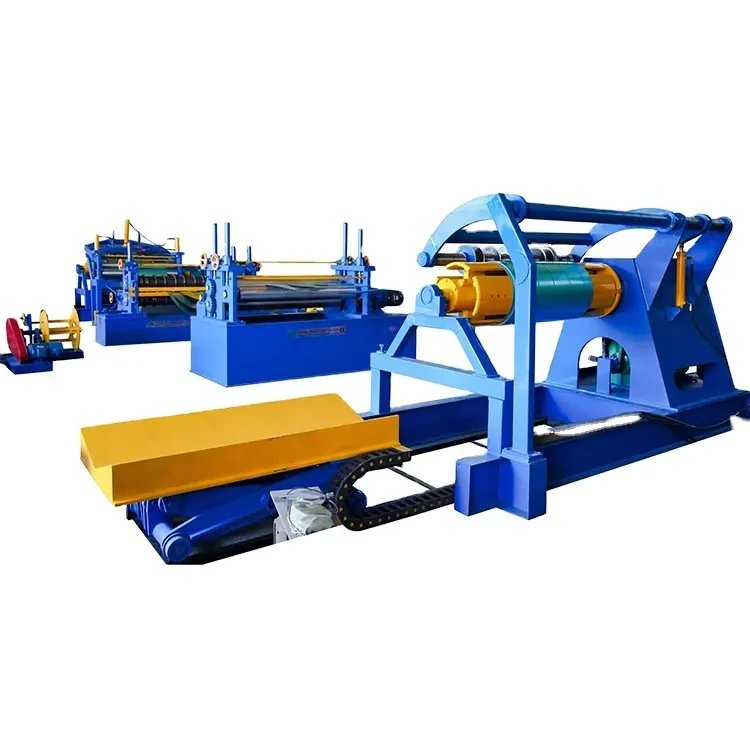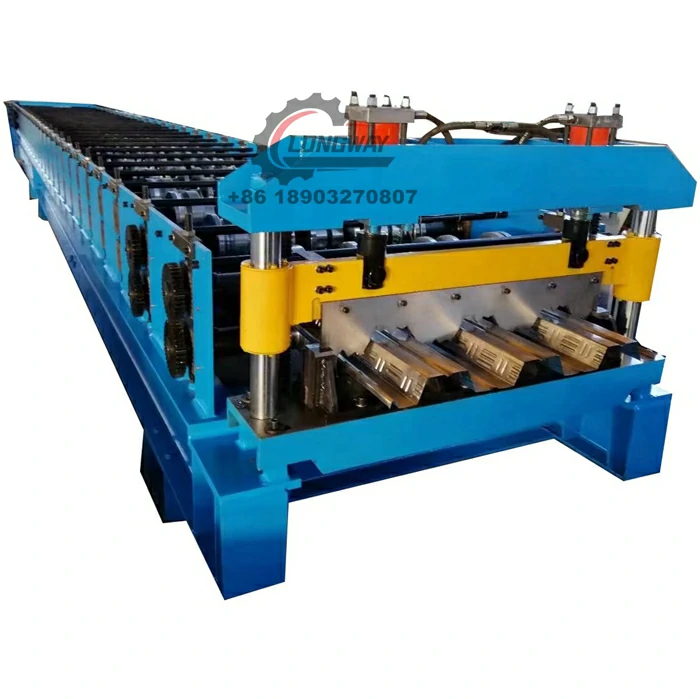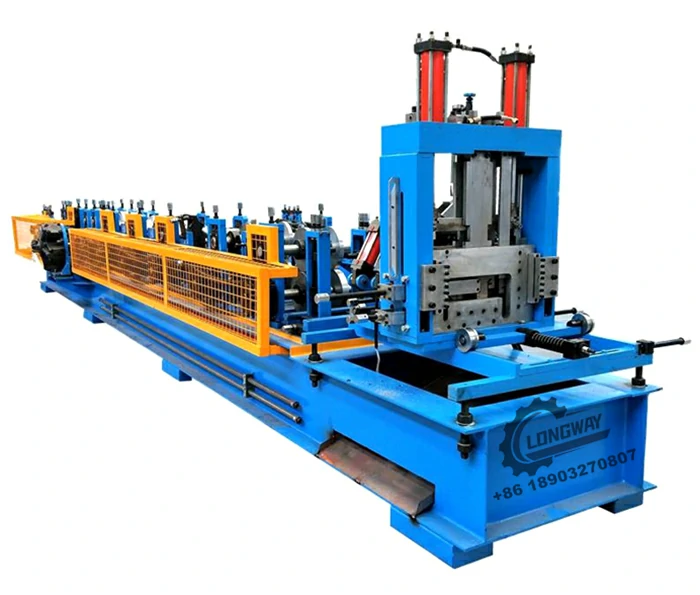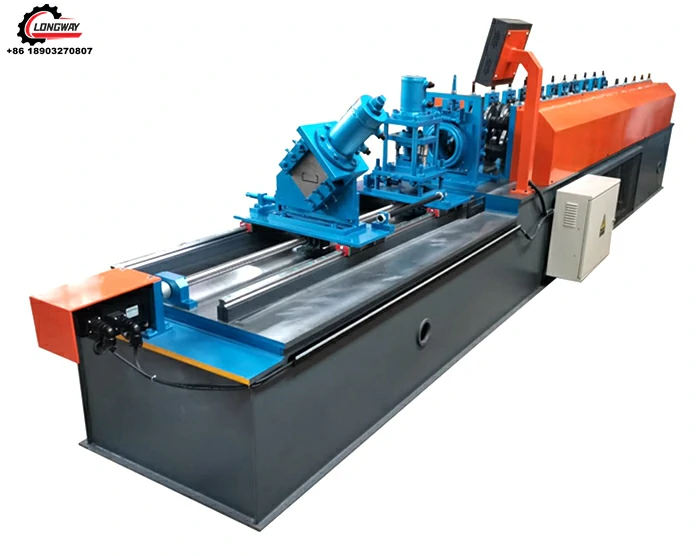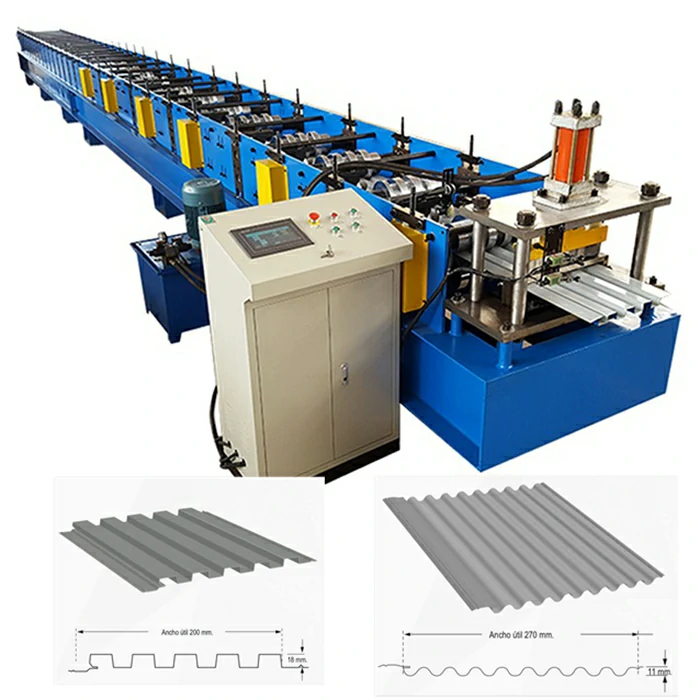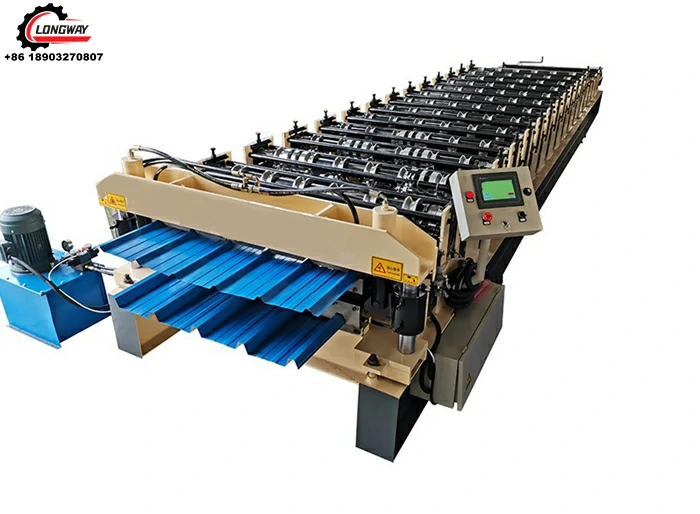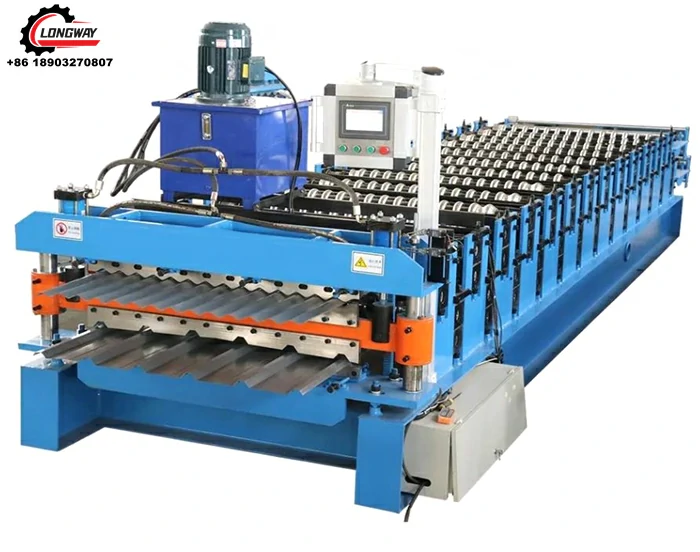Ag Panel Roll Former for Sale – Efficient Agricultural Panel Production Machinery
Understanding the Growing Demand for Ag Panel Roll Former for Sale
At a glance, the world might not immediately seem connected to the humble ag panel roll former for sale, but step into any booming agricultural hub or rural infrastructure project, and you quickly realize this machinery quietly shapes modern farming landscapes. It’s one of those behind-the-scenes heroes in agri-construction, ensuring everything from livestock fencing to greenhouse panels is produced efficiently and reliably.
Globally, the agricultural sector employs over 26% of the workforce according to the World Bank[1]. Almost every farm needs durable, cost-effective fencing or paneling solutions — which is where ag panel roll formers come in. They’re critical not only for productivity but also for safeguarding communities and livestock. So, understanding the nuances behind ag panel roll former for sale can save you time, money, or even a whole lot of hassle down the line.
Mini takeaway: Modern agriculture isn’t just about seeds and tractors; it’s also about the smart tools shaping the physical infrastructure that farms rely on.
Global Context: Why Ag Panel Roll Formers Matter Today
Looking at global ag sectors, growth isn’t slowing down anytime soon. The UN projects a 10 billion population mark by 2050, intensifying the food production challenge[2]. This puts pressure on farms worldwide to become more efficient, safer, and environmentally friendly — and part of that means reliable fencing and panel systems that protect crops and livestock while supporting sustainability efforts.
Yet, many regions still face critical shortages of reliable agricultural infrastructure, especially in emerging markets where fencing can prevent livestock theft or crop damage, but the right machinery isn’t accessible locally. Hence, the rise of the ag panel roll former for sale market as manufacturers rush to catch up with demand.
Problems such as prolonged construction time, high labor costs, and inconsistent panel quality plague many farmers and contractors across these regions, highlighting the need for automated, high-quality panel production systems.
What Exactly Is an Ag Panel Roll Former?
In simple terms, an ag panel roll former is a specialized machine that shapes raw metal coils into agricultural panels — think of those wire or metal grids commonly used for fencing. The “roll forming” process bends continuous strips of steel progressively to form the desired cross-section with consistent precision, no matter the length.
This equipment has close ties to modern agribusiness, infrastructure, and humanitarian projects. For example, quick-assembly livestock enclosures in drought-stricken zones rely on such panels, while NGOs might employ them in temporary fencing for refugee camps — safe, durable, and easy to ship.
Imagine a tool that turns bulky, raw metal into tailored, rugged fencing components ready for almost immediate use — that’s an ag panel roll former in action.
Key Components and Factors in Ag Panel Roll Former Use
1. Durability of Materials
The panels usually require galvanized or coated steel to resist corrosion from weather or livestock activity. Many engineers I spoke with emphasize that the machine must accommodate various steel thicknesses without compromising stability.
2. Scalability and Throughput
Production needs vary widely. Small farms might need 500 panels per month, but large commercial operations might demand thousands. Efficient roll formers should adapt to these scales without a steep jump in cost or maintenance issues.
3. Cost Efficiency
A big concern, naturally. The initial investment might look steep, but with rising labor costs and material waste in traditional fabrication, automated forming reduces both drastically over time.
4. Ease of Operation and Maintenance
Machines must be user-friendly — farmers or local technicians aren’t always machine experts. Quick-change dies and remote troubleshooting options can save days of downtime.
5. Customization Options
Different farms or projects have unique fencing specs — including mesh size, panel height, and wire tension. Versatile roll formers allow for switching panel designs relatively quickly, which is crucial in this market.
6. Energy Consumption
As sustainability becomes mainstream, energy-efficient motors and automation control systems in roll formers appeal to eco-conscious operators willing to adopt “green” tech.
Mini takeaway: The right ag panel roll former balances raw power with smart, adaptable technology — the kind that tech developers dream about and farmers rely on.
Global Applications & Real-World Use Cases
- North American livestock farms: Use roll formed panels extensively for quick fencing installation, helping reduce livestock escape incidents.
- Australian sheep stations: Employ modular fence panels for their remote, sprawling landscapes, benefiting from weather-resistant galvanized panels.
- Sub-Saharan Africa projects: NGOs introduce portable fencing to shield crops from wildlife, using local roll formers to cut costs and lead times drastically.
- European greenhouses: Use precision roll formed panels that also function as structural parts for high-tech agro-facilities.
- Post-disaster relief operations: Temporary, sturdy fencing made from roll formed panels helps protect affected areas efficiently.
It’s fascinating — a machine designed for agricultural panels often finds itself at the crossroads of humanitarian aid and high-tech farming.
Advantages & Long-Term Value of Investing in Ag Panel Roll Formers
An operator once told me: “Buying one of these saved us about 30% annually on fencing costs.” Here are some tangible perks:
- Cost Savings: Less manual fabrication, minimized waste, and faster production all contribute to a healthier bottom line.
- Enhanced Sustainability: Producing on-site reduces shipping emissions associated with pre-made panels and supports circular economy efforts.
- Improved Safety & Security: Durable fences reduce livestock loss and unauthorized entry, vital for farm livelihood.
- Social Impact: Access to affordable fencing supports smallholder farmers in emerging markets.
- Reliability and Consistency: Precise engineering lowers failure rates and replacement cycles.
The emotional impact — peace of mind, the trust your enclosure won’t give way to storm or cattle — is sometimes overlooked but invaluable.
Future Innovations in Ag Panel Roll Former Technology
Advances on the horizon include:
- Integration with IoT: Smart roll formers can track output quality and maintenance needs in real-time.
- Use of Advanced Materials: Composite or recycled-metal panels for lighter, stronger fencing solutions.
- Automation & Robotics: Automated loading and panel stacking to reduce human intervention.
- Green Manufacturing: Solar-powered roll former units are being trialed to appeal to off-grid farms.
It feels like even these traditional machines will soon be outfitted with some seriously high-tech brains, making ag panel production smoother than ever.
Common Challenges and How to Address Them
- High Initial Cost: Leasing options and modular designs are helping smaller operators afford roll formers.
- Technical Skills Gap: Training programs and user-friendly interfaces reduce the barrier to adoption.
- Maintenance Issues: Remote diagnostics and modular part replacements are becoming standard features.
- Energy Use: Energy-efficient upgrades and renewable inputs mitigate operational costs.
No solution is perfect, but the newest roll formers have surprisingly smart workarounds to keep downtime and frustration low.
Practical FAQs About Ag Panel Roll Former for Sale
Q: What factors should I consider before buying an ag panel roll former?
A: Look at production capacity, material compatibility, energy efficiency, and ease of maintenance. It’s vital to match the machine specs with your farm size and panel type needs.
Q: How does owning a roll former impact fencing costs long-term?
A: Usually, it reduces costs by over 20–30% because you control production, minimize waste, and reduce labor expenses.
Q: Can these machines handle custom panel sizes or shapes?
A: Many modern roll formers offer flexibility for various panel types, but confirm with vendors about die changeover and customization options.
Q: Are ag panel roll formers suitable for small farms or only industrial scale?
A: There’s a range of models. Small to medium farms can find affordable, compact machines while large farms require higher throughput equipment.
Q: How can I find reliable suppliers or manufacturers?
A: Investigate vendor reputation, customer service, warranty terms, and after-sales support. Comparing several options helps, as shown below.
Product Specification Table
| Specification | Typical Value | Remarks |
|---|---|---|
| Metal Sheet Thickness | 1.2 – 3.5 mm | Supports varied agricultural panel types |
| Panel Width | 1200 mm | Adjustable on some models |
| Production Speed | 8–12 meters/min | Depends on operator experience |
| Motor Power | 7.5 kW | Energy efficient brushless motors |
| Weight | 2300 kg | Portable but substantial frame |
| Warranty | 1 year | Extended support available |
Vendor Comparison for Ag Panel Roll Former
| Feature | Vendor A | Vendor B | Vendor C |
|---|---|---|---|
| Price Range | $22,000–$27,000 | $19,500–$25,000 | $24,000–$29,000 |
| Max Production Speed | 12 m/min | 10 m/min | 11 m/min |
| Customization | High | Medium | High |
| After-Sale Support | 24/7 Chat & Phone | Business Hours Only | Onsite Support |
| Energy Efficiency | High | Medium | High |
| User-Friendliness | Excellent | Good | Excellent |
Wrapping Up: Why Now Is the Time for Ag Panel Roll Former Investment
If you’re in the agri-industry or related infrastructure sectors, the opportunities delivered by an ag panel roll former for sale can’t be overstated. It’s about more than just panels — it’s about securing the future of food production, protecting livelihoods, and saving costs in an ever-demanding world.
For those keen to dive deeper, search for reputable suppliers, explore product demos, and calculate ROI carefully. Trust me, a good roll former could end up being one of the smartest purchases your farm or project ever makes.
Interested? Don’t hesitate to check out the latest offerings and detailed specs at ag panel roll former for sale. Experience the blend of traditional needs met with innovative machinery today.
References:
1. World Bank Data on Agriculture Employment – https://data.worldbank.org/
2. United Nations Population Prospects – https://www.un.org/development/desa/pd/
3. ISO Standards for Steel Construction – https://www.iso.org/standard/https://www.iso.org/standard/62085.html
-
Corrugated iron roofing sheet making machine with CE, AutoNewsNov.17, 2025
-
3mm Steel C U Channel Roll Forming Machine, Heavy DutyNewsNov.17, 2025
-
Calamima Micro Ondulada corrugated roof sheet machine - CNCNewsNov.17, 2025
-
Metal Roofing Roll Former for Sale Companies - Fast, PreciseNewsNov.17, 2025
-
Drywall Steel L Angle Bar forming machine | Fast, PreciseNewsNov.17, 2025
-
Corrugated Iron Roofing Sheet Making Machine, Fast & DurableNewsNov.11, 2025
-
Corrugated Metal Roofing Machine | High-Speed, Precise, CENewsNov.11, 2025
